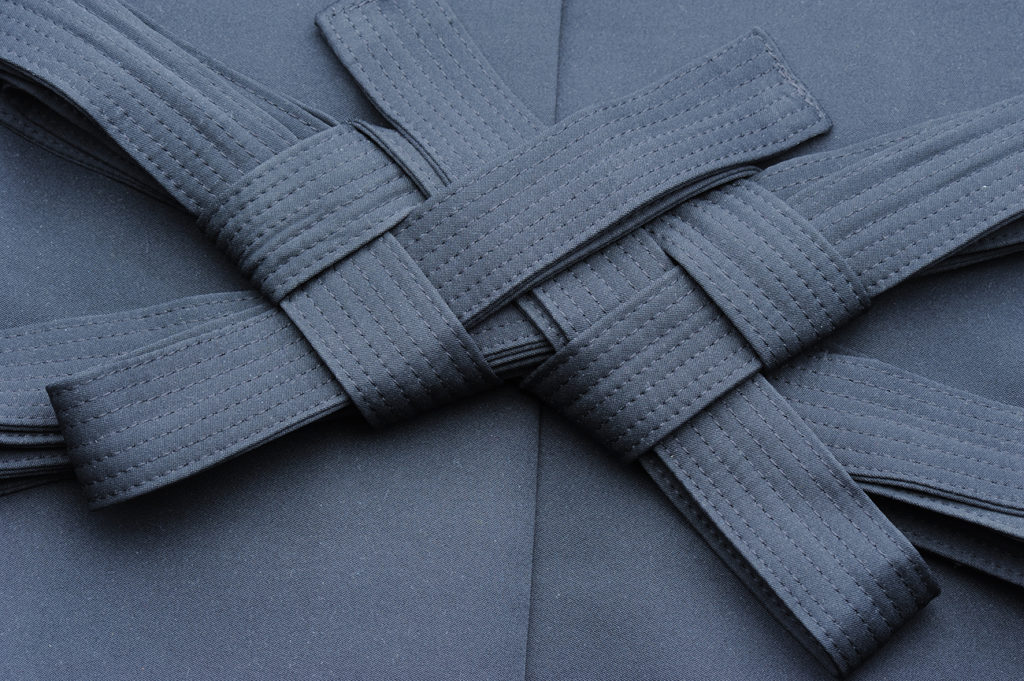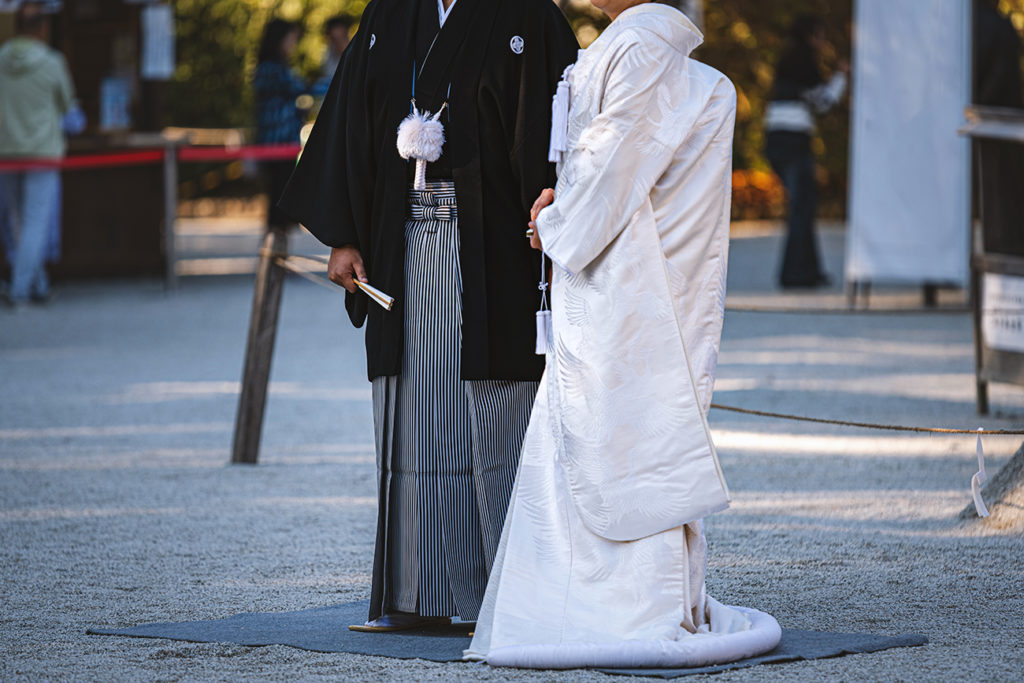
Form and Function of the Hakama
Hakama (袴) is a kind of traditional Japanese clothing once worn only by men but now used by both men and women. They are ankle length, tied to the waist, and usually worn over a kimono. There are two different types of hakama: divided umanori (horse-riding hakama) which have a split material for legs to move more freely, and undivided andon bakama (lantern hakama).
Shinto wedding with groom in traditional hakama.
A traditional hakama has seven deep pleats – five in front and two at the back. The pleats are symbolic of the seven virtues of bushido (“the way of the warrior”). The arrangement of the front pleats is a clear example of Japanese aesthetics. Three pleats are to the right and two pleats on the left but they appear balanced in plain sight.
A typical hakama is held in place by himo, two long straps on both sides of the front garment and two shorter ones at the back. The back of the hakama has a section called koshi-ita which is shaped like a trapezoid. On the inside of the garment is a hakama-dome, which is shaped like a spoon also called a hera. The hera is tucked into the himo to keep the hakama in place.
Aikido trainees wearing hakama.
Hakama traditionally completed a Japanese outfit worn by courtiers and samurai during the Edo Period. The attire also included a formal kimono, a sleeveless jacket with voluminous shoulders called a katagino, and a hakama.
Samurai warriors visiting higher ranking daimyo and shogun were required to wear a long hakama called naga-bakama, which impeded a person from walk normally, preventing any surprise attacks.
Many martial arts traditions that make use of hakama have a particular way of folding it. This is considered an important part of etiquette. In some forms of martial arts, as a sign of respect, the highest ranking student is responsible for folding the teacher’s hakama.
Here’s one way to fold a hakama:


